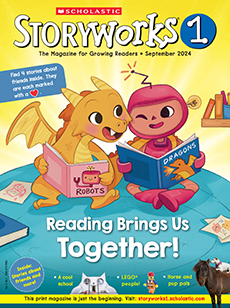Ring! A call came into the police station. Chief Bailey needed to come help right away! A mother bear was in the road with her five cubs. They were holding up traffic.
That was strange. Chief Bailey had gotten a lot of calls about bears in his time as a police officer. But he had never heard of bears holding up traffic.
The caller said the mother bear was very upset. Would Chief Bailey be able to help?

